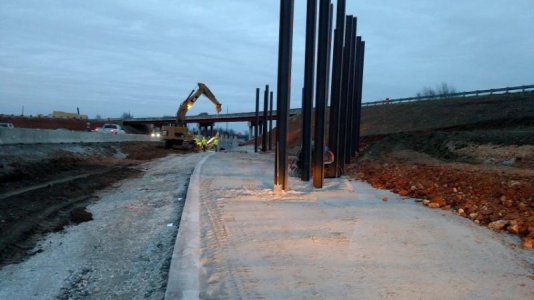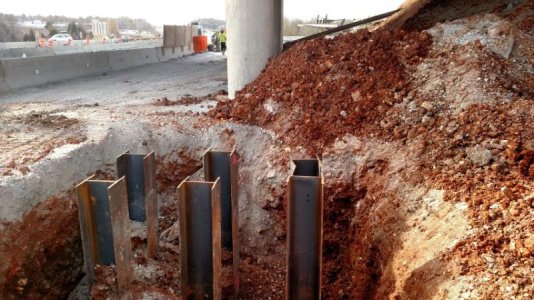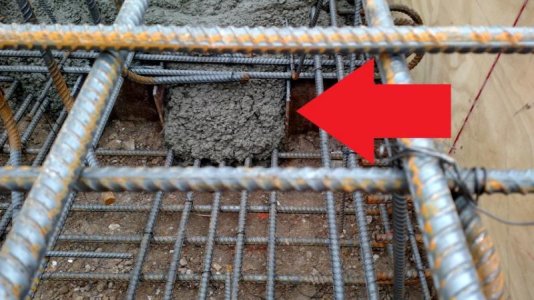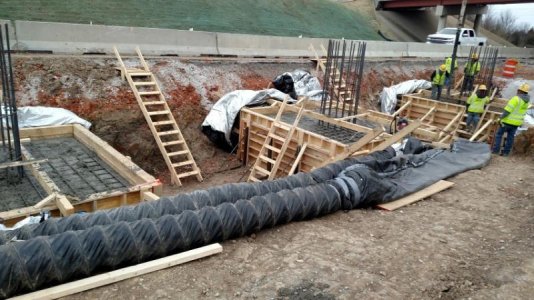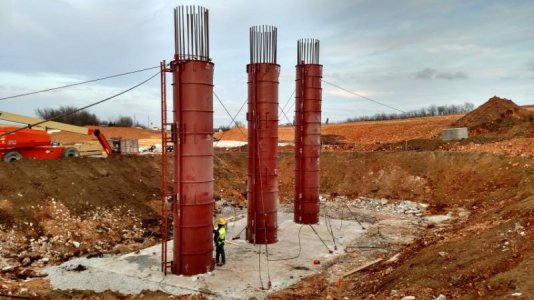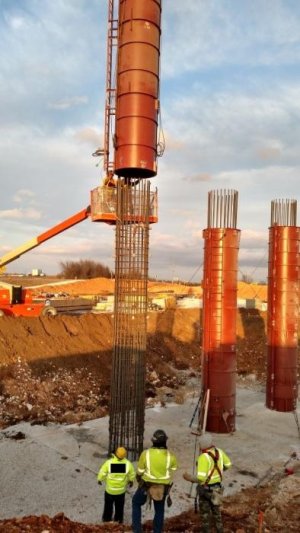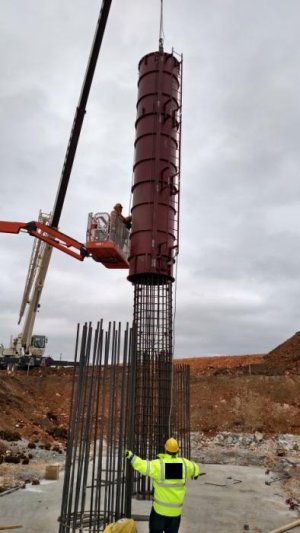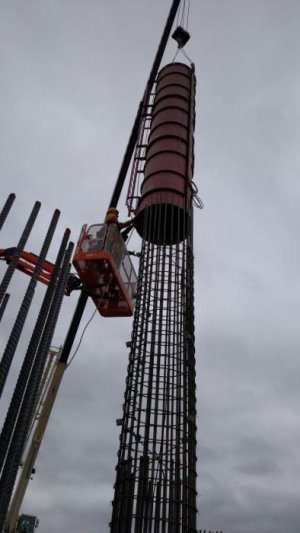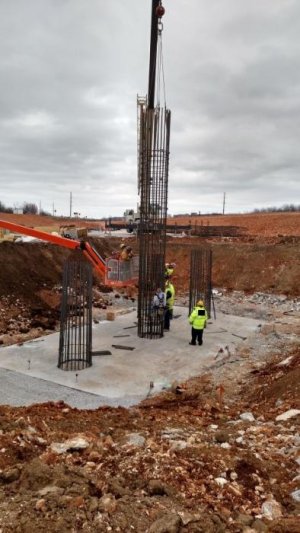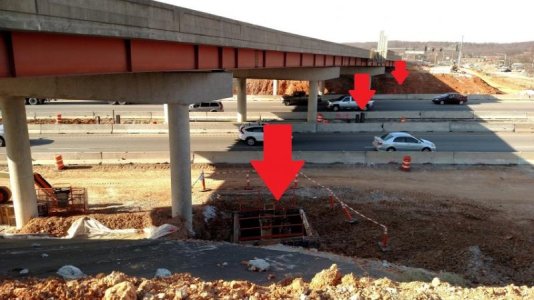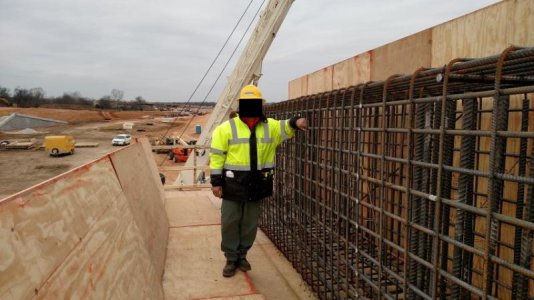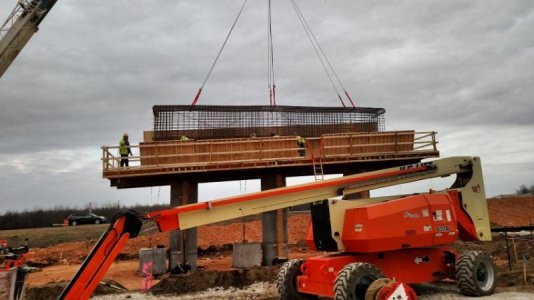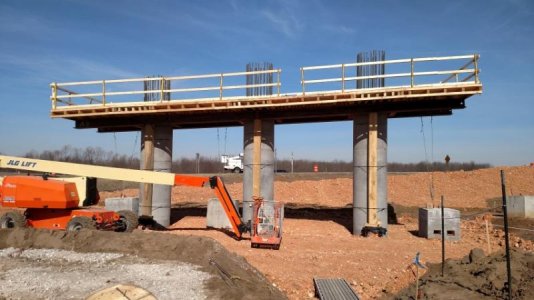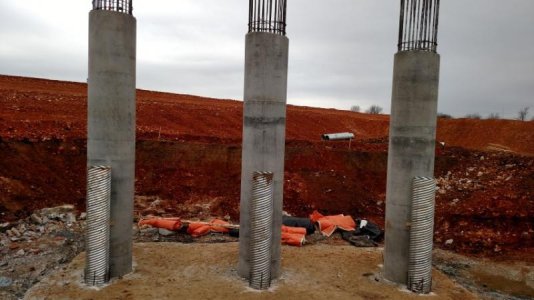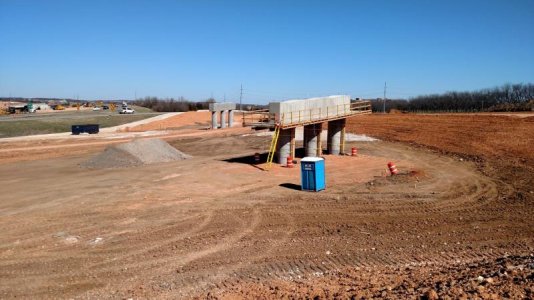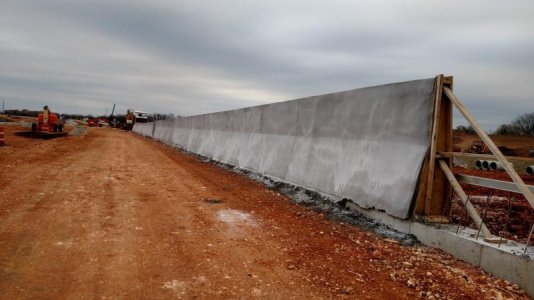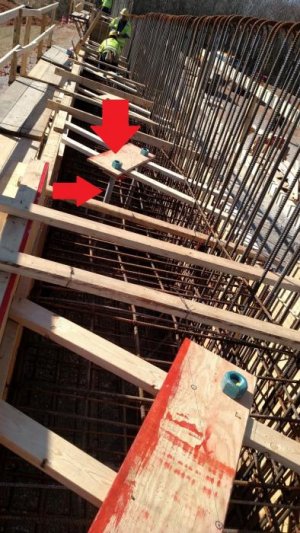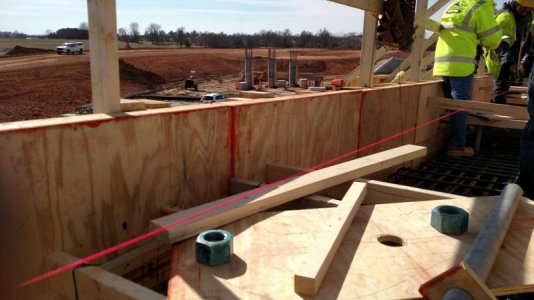Well, rainy season came. And here in NW Arkansas, that means a lot of water coming down on us. We have even had a couple tornado touchdowns. Because the entire site sits on a lot of red clay, water doesn't really drain that well after a big rain. Work has been crawling along.
Finally got the columns and caps up for 3 bents.
This was after several delays due to weather conditions and surveyor mistakes.
Here is what most people don't realize. When we are finally ready to put the beams across to build the bridge deck on top of them, the beams have to be anchored down to the beam seats with anchor bolts. The anchor bolts had to be placed in the concrete when the guys poured the concrete. Everything have to be put in place at the exact locations according to plan. In this case, a few inches left or right will be a pain in the ass to fix later on.
See where the red arrows are pointing? That's an anchor bolt.
Now, they have to be aligned perfectly with their counterparts in the other bents.
A lot of pressure on the surveyors LOL.
Before one of the pours of the cap, the pour was delayed by 8 hours. Yes, 8 hours. Surveyors moved the anchor bolts. Then they came back and moved them back to where they were. Then an hour later, they thought they were wrong and moved them again. Went back and forth until they checked it 3 times and got the same numbers each time.
We will know for sure if we actually got it right or not when we try to put the beams into place

In the mean time, my crews are erecting new barrier walls left and right. They're beautiful!



